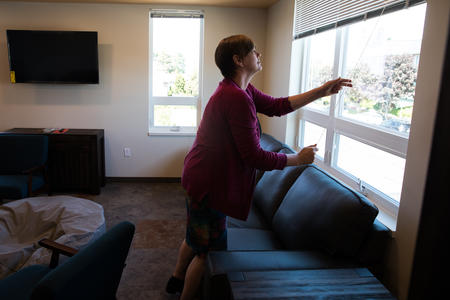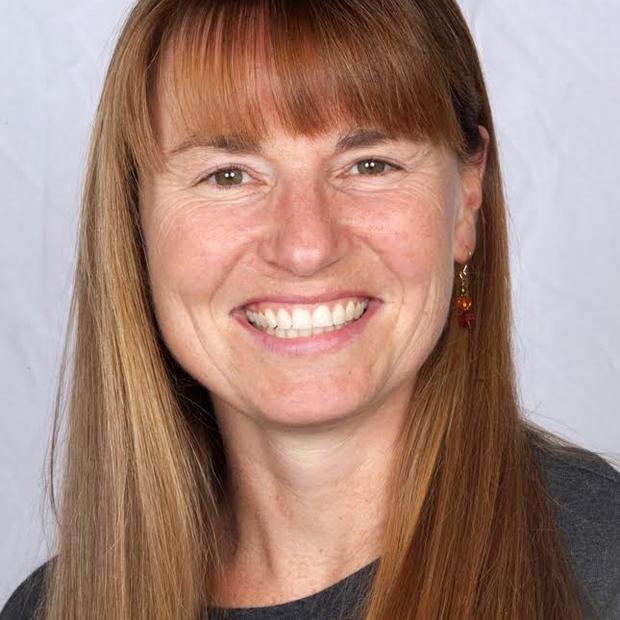Seated in a small conference room, Banks told Terry how he and his younger brother had wound up homeless in California after a rift with a family member there. They came back to their hometown, but Banks’ father could squeeze only one more person into his studio apartment. Banks decided that person should be his 18-year-old brother.
Getting a place “is not going to be an overnight thing,” Terry explained.
Yet, for a youth like Banks, the process is likely faster than it would have been just a year ago in Tacoma. Frustrated that young people were languishing for months in shelters and on the streets while waiting for housing, REACH, in collaboration with 15 other agencies, launched the ACT Program last October.
Using private funding, the program assists with move-in costs, a bus ticket home, gas to get to a job interview and other modest expenses that help youths — and sometimes their families — get and stay housed. Known as diversion, this sort of individualized approach to homelessness has proven successful with adults in Pierce County and beyond.
The ACT Program is one prong in a countywide push to end youth homelessness by 2022. Pierce and three other Washington counties were selected last year to join the Anchor Communities Initiative, a program of A Way Home Washington to ensure that every youth who needs help is able to get it.
ACT also helps young people before they land on the street. To get in line for housing services through the county, applicants must be fleeing domestic violence or be literally homeless — sleeping in a shelter, a tent or someplace unsuitable for human habitation. In contrast, ACT can work with youths not yet homeless, but who might be couch-surfing, about to be evicted or exiting juvenile detention with no place to go.
“Some of the most exciting successes are when the ACT team can facilitate a family mediation or finding a housing solution that the young person hadn’t thought of, ideally before they even get to a shelter,” said REACH Executive Director Nick Bayard.
For Banks, a little digging on Terry’s part turned up a distant cousin Banks didn’t know about. Today Banks lives with that cousin, is working at a restaurant and saving to get a place for himself and his brother.
Those kinds of creative solutions are essential in a region with a shortage of both affordable rentals and housing for people experiencing homelessness.
“We are not going to be able to end youth and young adult homelessness if we are not able to place these kids somewhere,” said Benjamin Feldbush, the Anchor Communities Initiative’s Pierce County coordinator.
To that end, ACT is expanding. It plans to add two outreach specialists, on top of the three who served about 300 young people ages 16 through 24 in the past year. It will also begin working with those as young as 13.
Steps to independence
At 21, Ayom Arop wants to be independent, but doesn’t quite know how to get there.
She has been staying at a young adult shelter since leaving home two weeks ago (“It’s complicated,” she said of her family situation). “I want an apartment, a stable job, a life of my own,” she said.
Today Arop is in REACH’s computer lab with outreach specialist Jordan Gilbert, who walks her through obtaining her credit history. Arop learns she has no accounts or debts in her name. “I’m actually happy,” she said, wriggling in her chair. “I’m relieved.”
Now she’ll need to start building her credit, Gilbert explained. Without that, getting an apartment will be much harder. She also needs steady work, so they begin looking at job opportunities together before veering into talk of college classes.
“I’m not too far from her age,” Gilbert said. “But my mom taught me a lot of this stuff.”
Unlike Gilbert, the youths she assists generally haven’t had anyone to teach them such life skills, or to provide a safety net when they stumble.
Most come to ACT with a lack of credit, rental history and record of stable employment. Roughly 70% are unemployed or underemployed. Much of the outreach specialists’ job involves ongoing, intensive assistance with everything from applying for jobs to getting health care and a driver’s license. Without those building blocks, no housing situation will be sustainable, they say.
ACT peer outreach specialist Marlin Henderson assists a homeless young adult looking for housing and other services at the REACH Center in Tacoma, WA on August 22, 2019. During the intake process he will gather information, engage in a conversation, and connect youth to services or facilitate family reunification. "It has to be sustainable,” Henderson says, “No band aids.”
Time for transition
Youths’ lack of independent living skills is one of the biggest barriers to their maintaining stable housing, says outreach specialist Marlin Henderson.
“How do we expect someone who for a long time has survived on the streets to be able to budget, pay bills on time?” he said.
Henderson and his colleagues have just handed out plastic bags stuffed with socks, snacks and their business cards to a dozen young people gathered one July morning in front of the Tacoma Public Library.
Roughly one-third of that group, Henderson notes, had received rental subsidies through a federally funded program called rapid rehousing. The assistance lasts up to 12 months and can include varying degrees of case management. Now they were homeless again.
The state Department of Commerce, which maintains statewide homelessness data, was unable to say what proportion of young adults return to homelessness after exiting rapid rehousing. In the rapid rehousing program REACH manages, about 80% exit to permanent housing, according to Bayard, the executive director of REACH.
Young adults entering the county’s homelessness system “are pretty much behind the starting line on every metric of finances, job history, education, mental health, substance abuse,” Bayard said. “Twelve months to work on one of those things is sometimes not enough.”
With new state funding, REACH soon can provide transitional housing for an additional year. It also will add a housing navigator to guide youths in applying for apartments and negotiating with landlords.
“And ultimately, we have to do better on prevention,” Bayard said, “because for years we've only been able to really, truly deeply serve the folks who have hit rock bottom.”
Serving young people who are exiting detention but are unable to return to family also remains a challenge. Since those youth are not considered literally homeless, Henderson said, they are not eligible to enter the federally mandated system, called coordinated entry, that counties use to prioritize applicants for scarce housing resources. The best ACT can do for now is to meet youth before their release and discuss options that don’t require first being on the streets, such as shared housing.
Building trust
Henderson usually doesn’t volunteer his past to clients, but it comes through in the 41-year-old’s desire to be the supportive adult he lacked growing up.
“I lived a life that attracted destruction,” Henderson said of his own youth, which included 15 months in prison. Having his own children, and then working with young people for the past 16 years, “it’s my lifeline,” he said.
As a Black man, Henderson said, he’s able to relate to the youth of color who make up about 60% of those ACT serves. The program has focused on young people of color and LGBTQ+ youth, who are grossly overrepresented among the homeless population. That means working to hire and retain people like Henderson who can build trust among those communities, Bayard said.
“It shows that as a culture, as Black folks, as people of color, we care,” Henderson said. “I’m an extension of the community that cares about you.”








